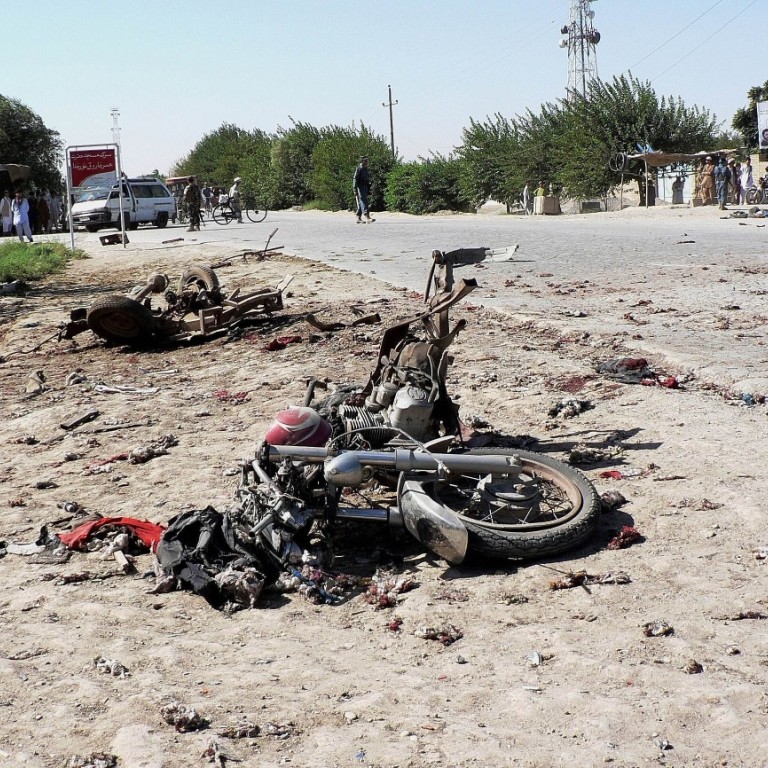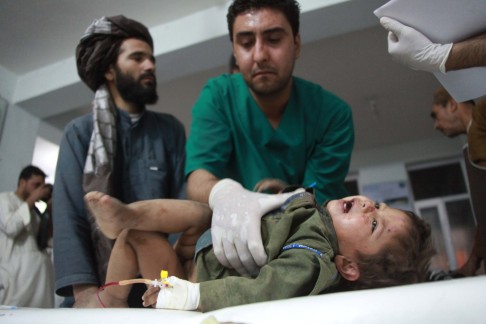
Civilian casualties up 23pc in Afghan war, says UN
Increased Taliban attacks and fighting now killing more non-combatants
Civilian casualties in the Afghan war rose 23 per cent in the first half of this year due to Taliban attacks and increased fighting between insurgents and government forces, the UN said on Wednesday.
The increase reverses a decline last year and raises questions about how Afghan government troops can protect civilians as US-led Nato troops withdraw from the 12-year war against the Taliban.
The UN Assistance Mission in Afghanistan (UNAMA) said 1,319 civilians died and 2,533 were injured as a result of the war from January 1 to June 30, up 23 per cent on the same period last year.
UNAMA said there was a 14 per cent increase in total civilian deaths and a 28 per cent increase in total civilian injuries.
Female civilian casualties rose 61 per cent, most caused by fighting on the ground between pro-government and insurgent forces, the UN said in a report.
The UN Assistance Mission in Afghanistan (UNAMA) said 1,319 civilians died and 2,533 were injured as a result of the war from January 1 to June 30, up 23 per cent on the same period last year
Child casualties were up 30 per cent with improvised explosive devices (IEDs), the Taliban weapon of choice, the leading cause.
“The rise in civilian casualties in the first half of this year reverses the decline recorded last year, and marks a return to the high numbers of civilian deaths and injuries documented in 2011,” the report said.
The UN said 74 per cent of the casualties were caused by insurgents, nine per cent by pro-government forces and 12 per cent as a result of ground fighting between the two sides.

While IED attacks remain the highest cause of civilian casualties, increased ground fighting between Afghan troops and insurgents was the second leading cause and a new trend in the first half of this year.
The Nato combat mission is due to close down at the end of next year and Afghan government forces have taken the lead in the battle against the Taliban, who were deposed in the 2001 US-led invasion.
“Despite Afghan forces leading almost all military operations countrywide, a permanent structure does not exist... to systematically investigate allegations of civilian casualties, initiate remedial measures and take follow-up action,” the UN said.
The UN also recorded a 76 per cent increase in civilian casualties as a result of insurgents targeting civilian government employees, government offices, district headquarters and other offices.
There was no immediate reaction from either the Afghan government or the Taliban, which usually deny targeting civilians.
The UN report also recorded a sharp decline of 30 per cent in the number of civilian casualties as a result of Nato air strikes, which in the past have been a source of considerable controversy.
The International Security Assistance Force in Afghanistan welcomed the report and blamed the Taliban for nearly 90 per cent of civilian casualties.
It said that “a number of positive steps” it had taken to reduce civilian casualties were having “a real result”.
The UN report was released as Afghan President Hamid Karzai held talks with visiting US special representative for Afghanistan and Pakistan, James Dobbins, officials said.

On Tuesday, the Pentagon told Congress in a twice yearly report to lawmakers that the Afghan military is increasingly effective but will need considerable training and foreign aid in the future.
There have been signs of friction between President Barack Obama and Karzai, with Washington reportedly mulling a faster withdrawal of troops or even leaving no forces behind after next year.
Half of the 68,000 US troops in Afghanistan are currently set to leave by February.
Karzai suspended talks on any future US military presence to protest against the manner in which a Taliban office opened in Qatar in June, billed initially as a step forward in peace efforts.
But last week he told top US military commander General Martin Dempsey that he was ready in principle to let a residual American force stay in the country beyond next year.
